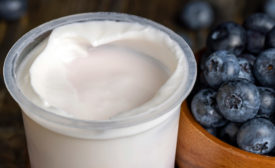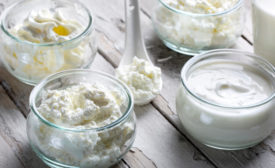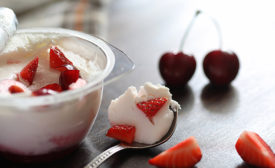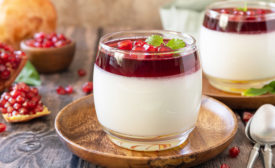Articles by K.J. Burrington
Yogurts made with specialty milks offer the great nutritional properties of dairy, but they may also offer better digestibility to the consumers that need it.
Read More
World Dairy Summit provides many new ideas
Unique dairy products can be found all over the world.
December 11, 2023
The latest about dairy and alcohol
The number of alcoholic products featuring dairy continues to increase, according to a recent survey.
September 19, 2023
The benefits of using cultured dairy products as ingredients
Sour cream, cream cheese and yogurt provide amped up nutritional value to favorite foods.
May 19, 2023
Yogurt standard of identity goes under the microscope
Products may not meet new FDA standards; what you need to know
February 28, 2023
Overcoming challenges of plant-based hybrids
The rise of flexitarianism among consumers has led to diversification and innovation in the category.
December 28, 2022
How to prevent common product defects
Being aware of the sources of the problem in cultured products will help prevent the problem from occurring.
September 13, 2022
Slash sugar in yogurt
Ingredient suppliers have a number of tools to help with sugar-reduction goals.
April 22, 2022
Leverage milk’s inherent benefits
There are components of milk that contribute to immunity, and culturing milk adds even more to its immune health contributions.
January 19, 2022
Enhance nutrition in cultured dairy products
Vitamins, minerals and prebiotics spell opportunity.
November 22, 2021
Get our new eMagazine delivered to your inbox every month.
Stay in the know on the latest dairy industry trends.
SUBSCRIBE TODAYCopyright ©2024. All Rights Reserved BNP Media.
Design, CMS, Hosting & Web Development :: ePublishing









